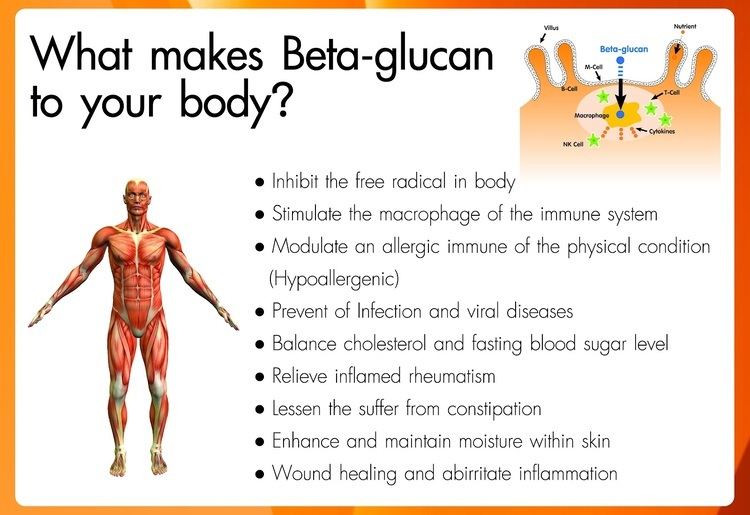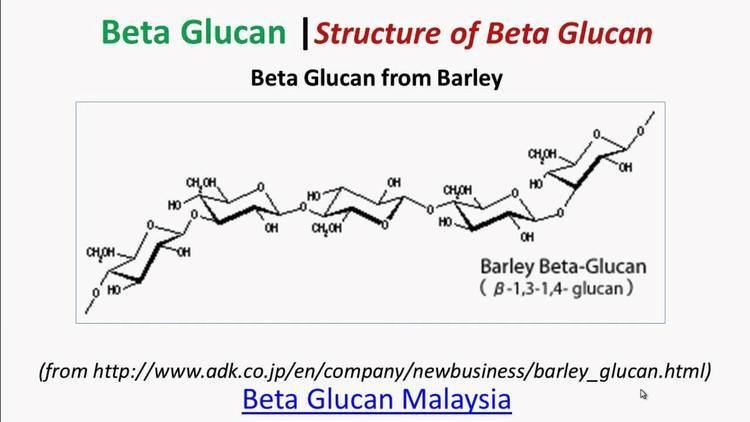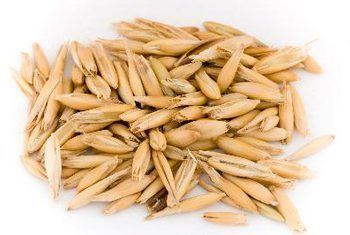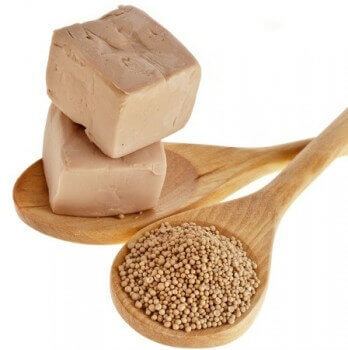 | ||
β-Glucans (beta-glucans) comprise a group of β-D-glucose polysaccharides naturally occurring in the cell walls of cereals, yeast, bacteria, and fungi, with significantly differing physicochemical properties dependent on source. Typically, β-glucans form a linear backbone with 1-3 β-glycosidic bonds but vary with respect to molecular mass, solubility, viscosity, branching structure, and gelation properties, causing diverse physiological effects in animals.
Contents
- History
- Structure
- glucan types
- Cereal Glucans
- Mushroom Glucans
- Yeast Glucans
- Glucan absorption
- Additional applications
- References

Various studies have examined the potential health effects of β-glucan. Oat fiber β-glucan at intake levels of at least 3 g per day can decrease the levels of saturated fats in the blood and may reduce the risk of heart disease. Some studies have suggested that cereal-derived β-glucan may also have immunomodulatory properties. Yeast and medicinal mushroom derived β-glucans have been investigated for their ability to modulate the immune system. β-glucans are further used in various nutraceutical and cosmetic products, as texturing agents, and as soluble fiber supplements, but can be problematic in the process of brewing.

History

Cereal, yeast, and fungal products have been used for centuries for medicinal and cosmetic purposes; however, the specific role of β-glucan was not explored until the 20th century. β-glucans were first discovered in lichens, and shortly thereafter in barley. A particular interest in oat β-glucan arose after their cholesterol lowering effect was reported in 1984.

In 1997, the FDA approved of a claim that intake of at least 3 g of β-glucan from oats per day decreased saturated fats and reduced the risk of heart disease.
Structure

Glucans are arranged in six-sided D-glucose rings connected linearly at varying carbon positions depending on the source, although most commonly β-glucans include a 1-3 glycosidic link in their backbone. Although technically β-glucans are chains of D-glucose polysaccharides linked by β-type glycosidic bonds, by convention not all β-D-glucose polysaccharides are categorized as β-glucans. Cellulose is not typically considered a β-glucan, as it is insoluble and does not exhibit the same physicochemical properties as other cereal or yeast β-glucans.

Some β-glucan molecules have branching glucose side-chains attached to other positions on the main D-glucose chain, which branch off the β-glucan backbone. In addition, these side-chains can be attached to other types of molecules, like proteins, as in Polysaccharide-K.
The most common forms of β-glucans are those comprising D-glucose units with β-1,3 links. Yeast and fungal β-glucans contain 1-6 side branches, while cereal β-glucans contain both β-1,3 and β-1,4 backbone bonds. The frequency, location, and length of the side-chains may play a role in immunomodulation. Differences in molecular weight, shape, and structure of β-glucans dictate the differences in biological activity.
β-glucan types
β-glucans form a natural component of the cell walls of bacteria, fungi, yeast, and cereals such as oat and barley. Each type of beta-glucan comprises a different molecular backbone, level of branching, and molecular weight which effects its solubility and physiological impact. One of the most common sources of β(1,3)D-glucan for supplement use is derived from the cell wall of baker’s yeast (Saccharomyces cerevisiae). The β(1,3)D-glucans from yeast are often insoluble. However, β(1,3)(1,4)-glucans are also extracted from the bran of some grains, such as oats and barley, and to a much lesser degree in rye and wheat. Other sources include some types of seaweed, and various species of mushrooms, such as reishi, Ganoderma applanatum, shiitake, Chaga and maitake.
Cereal β-Glucans
Cereal β-glucans from oat, barley, wheat, and rye induce a variety of physiological effects that positively impact health. Barley and oat β-glucans have been studied for their effects on blood glucose regulation in test subjects with hypercholesterolemia.
Oats and barley differ in the ratio of trimer and tetramer 1-4 linkages. Barley has more 1-4 linkages with a degree of polymerization higher than 4. However, the majority of barley blocks remain trimers and tetramers. In oats, β-glucan is found mainly in the endosperm of the oat kernel, especially in the outer layers of that endosperm.
Mushroom β-Glucans
β-D-Glucan forms part of the cell wall of certain medically important fungi, especially Aspergillus and Agaricus species. Mushroom beta-glucans are linked by 1,3 glycosidic bonds with 1,6 branches. An assay to detect its presence in blood is marketed as a means of diagnosing invasive fungal infection in patients. False positives may occur because of fungal contaminants in the antibiotics amoxicillin-clavulanate, and piperacillin/tazobactam. False positives can also occur with contamination of clinical specimens with the bacteria Streptococcus pneumoniae, Pseudomonas aeruginosa, and Alcaligenes faecalis, which also produce (1→3)β-D-glucan.
Mushroom β-glucans have been proposed to act as "biological response modifiers" based on their effects on the immune system. It has been suggested that receptors on the surface of innate immune cells called dectin-1 and complement receptor 3 (CR3 or CD11b/CD18) are responsible for binding to β-glucans, allowing the immune cells to recognize them as "non-self". This immune response regulation also affects antitumour properties. Several studies note an impact on epithelial cell cytokine generation.
Yeast β-Glucans
β-Glucans found in the cell walls of yeast contain a 1,3 carbon backbone with elongated 1,6 carbon branches A series of human clinical trials in the 1990s evaluated the impact of PGG-glucan on infections in high-risk surgical patients. In these studies, PGG-glucan significantly reduced complications. Orally administered yeast-glucan was reported to decrease the levels of IL-4 and IL-5 cytokines responsible for the clinical manifestation of allergic rhinitis, while increasing the levels of IL-12.
β-Glucan absorption
Enterocytes facilitate the transportation of β(1,3)-glucans and similar compounds across the intestinal cell wall into the lymph, where they begin to interact with macrophages to activate immune function. Radiolabeled studies have verified that both small and large fragments of β-glucans are found in the serum, which indicates that they are absorbed from the intestinal tract. M cells within the Peyer’s patches physically transport the insoluble whole glucan particles into the gut-associated lymphoid tissue.
Additional applications
Cereals, mushroom, and yeast β-Glucan facilitate bowel motility and can be used in amelioration of intestinal problems, particularly obstipation. Indigestible β-glucans, forming a remarkable portion of these materials, are also able to modulate mucosal immunity of the intestinal tract.
